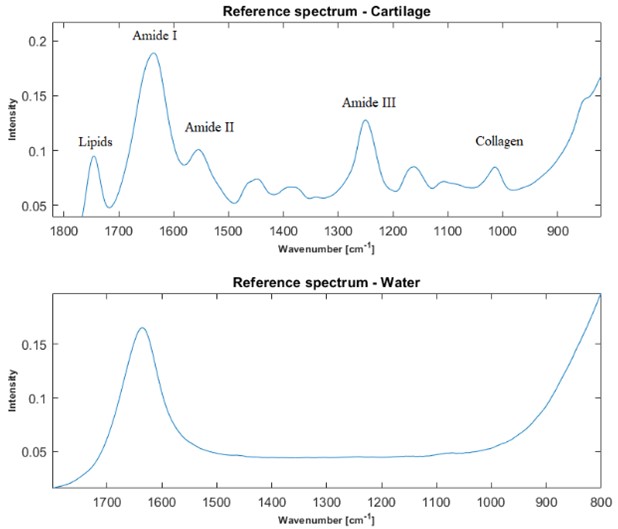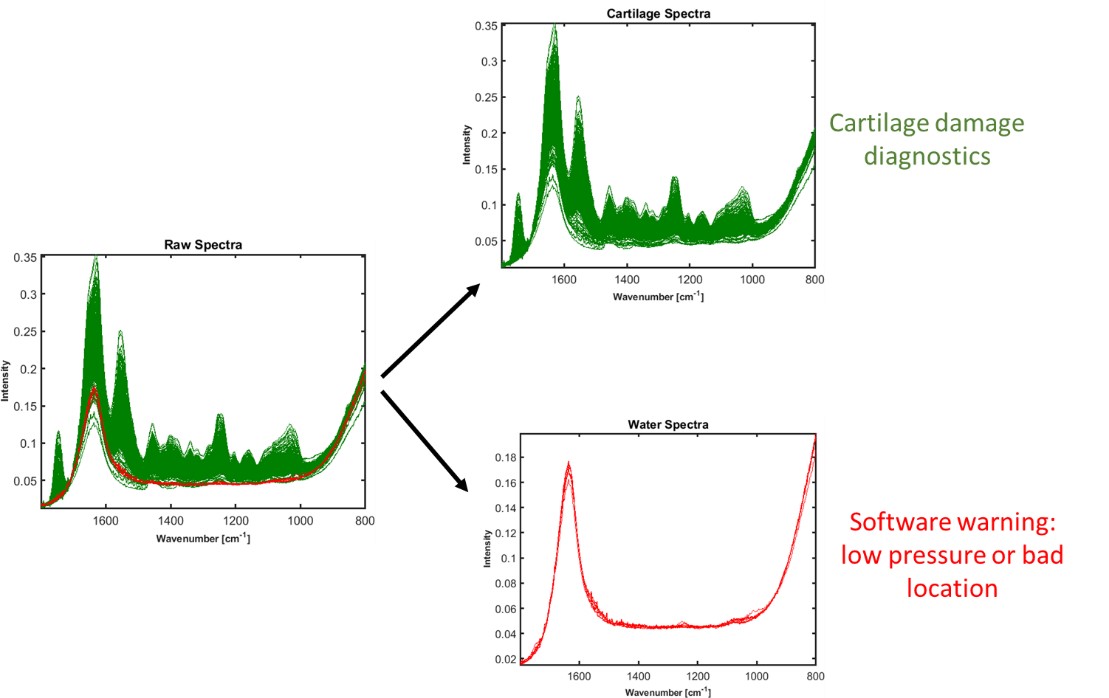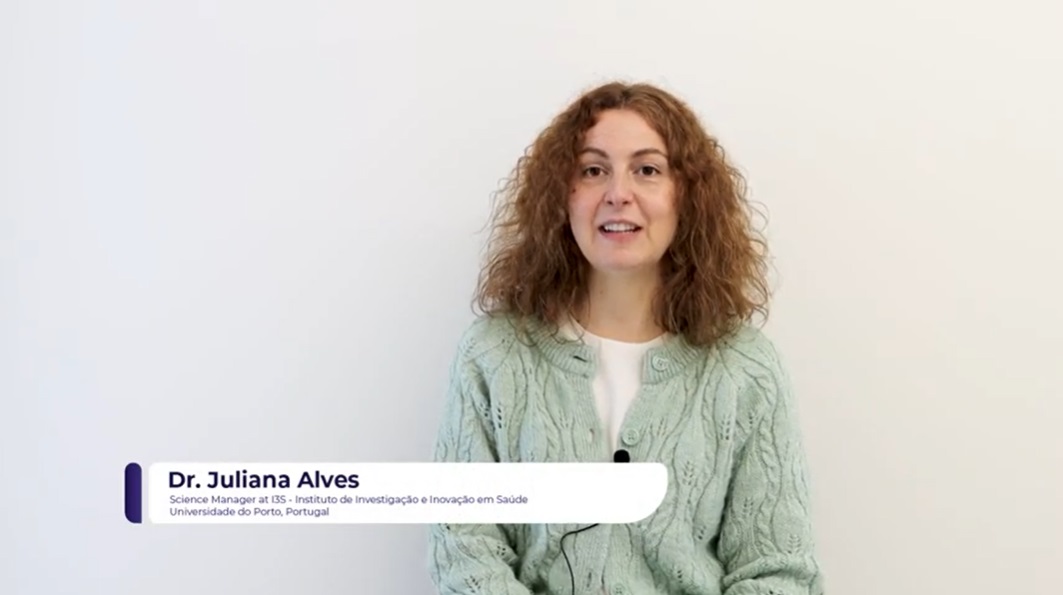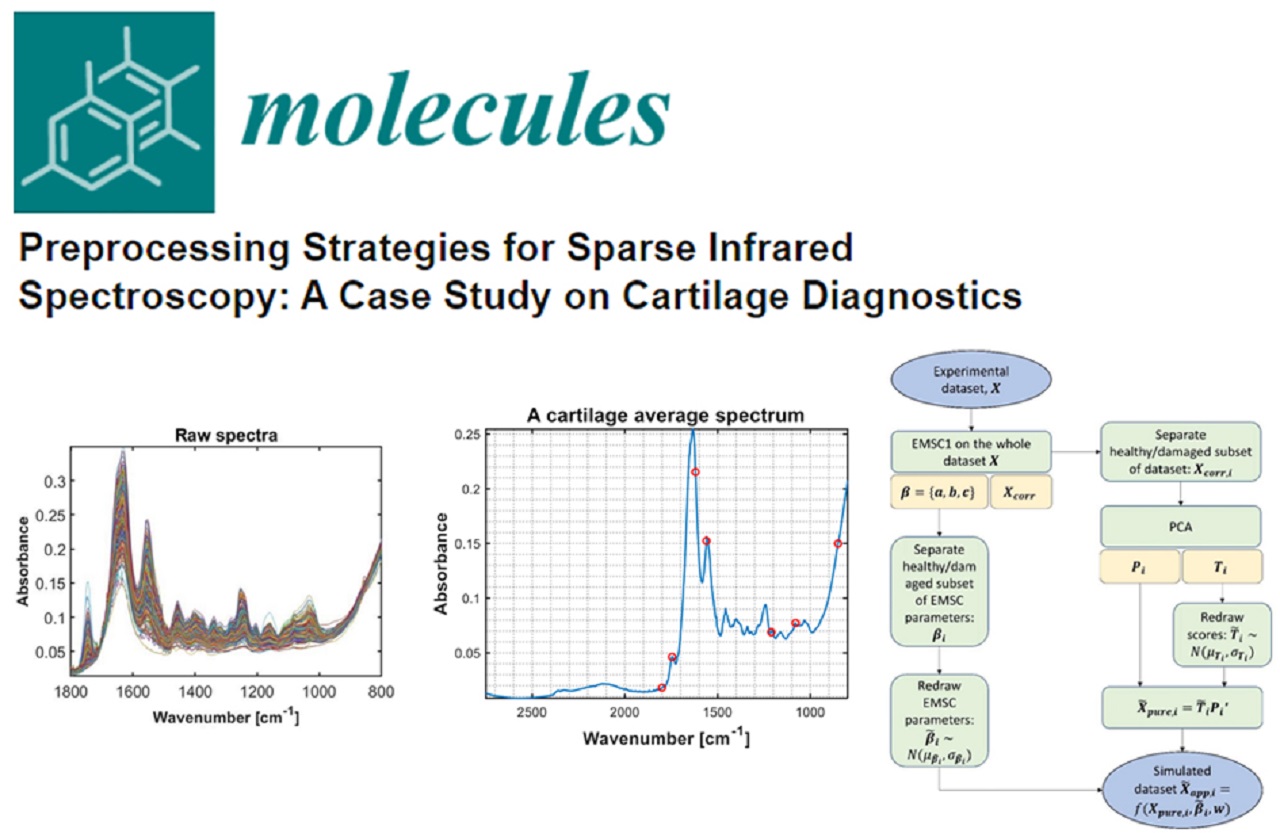In the MIRACLE project, seven QCL lasers are combined in one probe, which means that the data analysis is only based on seven wavenumber readings. Therefore, updated techniques are required for spectral data quality assessment of sparse raw data.
Fourier transform infrared spectroscopy (FTIR) has been used as an analytic method in different fields, e.g., medical, food, and environment etc. However, nowadays the focus lays in developing even cheaper solutions for measuring mid-infrared radiation than the spectrometers which are considered to be expensive. Thus, cheaper and smaller devices like laser light sources, such as quantum cascade lasers (QCL), are being revised as alternative sources. These laser light sources do not cover the full mid infrared spectral range, and their range should be carefully chosen based on selected (important) wavenumbers related to important information for the sample of interest. The MIRACLE project aims to develop an arthroscopic probe coupled with an ATR infrared QCL based system, to be used for investigating knee cartilage during arthroscopy. In the MIRACLE project, seven QCL lasers are combined in one probe, which means that the data analysis is only based on seven wavenumber readings. Therefore, updated techniques are required for spectral data quality assessment of sparse raw data.
Multivariate data analysis involves different steps, from quality assessment, preprocessing, development of calibration models, to predictions. The BioSpec group at the Norwegian University of Life Sciences (NMBU) has conducted a study where they developed a technique that filters the recorded data into high-quality (containing cartilage information) and low-quality (only water or very low cartilage signal) spectra. A low-quality spectrum can be obtained for example by applying too low pressure on the probe, resulting in bad contact between the sample and the probe. In this case, only the surrounding water solution is being measured. Although infrared spectra of cartilage and water usually can be visually distinguished from each other, there is a gradual transition between low-quality cartilage and high-quality spectra. The MIRACLE system should be able to automatically perform a quality test on the collected spectra, to be able to remove spectra which do not have any diagnostic value. The technique developed by NMBU works for both full range spectra and sparse data. The developed technique is based on Multiplicative Signal Correction (MSC) and has proven to be a robust method for quality testing.

Figure 1. Two representative examples of water and cartilage spectra (from human cartilage).

Figure 2. Results of quality assessment of full range spectra by the MSC approach.


